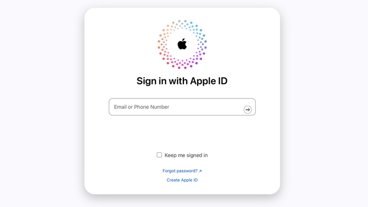Data suggests Apple has cruised past 10 million iPhone goal
The consensus estimates for iPhone sales figures for Apple’s Q4 (calendar Q3) were calling for approximately 4 million units. It now appears that Apple has sold at least 7 to 7.5 million iPhones in Q4 — nearly 80% above consensus. Apple has far surpassed even Gene Munster’s bullish estimates of 5 million iPhone sales in Q4 according to the data.
At MacWorld 2007, when Apple was trading at the same price it is today, Steve Jobs and Apple set a bold goal of selling 10 million iPhones in 2008. Despite Apple’s consistent reassurances of meeting its goal, bearish analysts repeatedly raised irrational concerns about whether Apple could reach such lofty sales figures. In January, Bernstein Research analyst Toni Sacconaghi, an analyst who rarely comments on Apple, started the “missing iPhones controversy†which led to a herd of naive analysts to reduce their iPhone sales estimates to numbers that fell well below Apple’s 10 million iPhone goal for 2008. Sacconaghi forecasted that Apple would only sell 7.9 million iPhones in the period. This obviously put considerable pricing pressure on shares of Apple in February.
Kathryn Huberty of Morgan Stanley estimated that Apple would only sell 9.3 million iPhones for the year. Apple now appears to be on track to sell nearly double that number. Yet, Huberty and Sacconaghi weren't the only ones to grossly underestimate the company's iPhone performance. Keith Bachman of BMO Capital also jumped on bandwagon in February when he estimated that Apple would only sell 8.5 million iPhones in 2008. Scott Craig of Bank of America also maintained bearish iPhone estimates in February with an 8 million iPhone sales target. Several other analysts followed suit and are now likely to be proven wrong.
IMEI Number Tracking by Mac Observer’s AFB
An IMEI number or an International Mobile Equipment Identity number is a unique 15 digit code assigned to each individual iPhone found on the back of the box in which an iPhone is packaged. Within this 15 digit code are two 6-digit numerical sequences crucial to determining the number of iPhones being produced. One 6 digit number, known as the TAC, or Type Allocation Code, signifies a particular build or set of iPhones being manufactured. The second 6 digit number is unique to each individual iPhone produced in that particular series—so that 1 million iPhones can be registered to a specific TAC. In other words, one six digit code, known as the TAC, signifies a set of iPhones being produced whereas the other six digit code signifies each individual iPhone within the TAC set.
Investor Village's AAPL Sanity Board member 'howlongtoretire,' along with members at the Apple Finance Board at Mac Observer, have been collecting IMEI numbers [spreadsheet] from new 3G iPhones sold during the period, and have been maintaining a spreadsheet of iPhone IMEI data points along with the purchase date, model, and production week. By early September, Apple was on its eighth TAC, meaning that 8 million 3G iPhones had already been manufactured. The actual number of handsets sold versus manufactured depends on a variety of factors including the amount of inventory Apple carries in its retail chain, defects that were destroyed, defects that were sold and then exchanged, display models etc.
However, the latest IMEI data point collected by AFB was 9,190,680 — an 8GB Black iPhone recorded as manufactured on September 29 and sold on October 5. This suggests that even if a whopping 1.5 million iPhones of the total IMEI registered devices are unsold as of today, an unlikely assumption, it would still put 3G iPhone sales at 7.6 million units and 2008 iPhone sales at over 10 million units. Coming into the quarter, Apple had already sold 2.42 million iPhones. Thus, 7.6 million 3G iPhones sold puts Apple above 10 million units for the year.
Net Applications OS Market Share:
The Net App OS share measurements based on web usage data lends further support to the IMEI tracking conclusions. In the weeks leading up to the 3G launch, iPhone OS share was rather consistent hovering at 16 bps. During this period, the population of iPhones remained static at 6 million units because inventory dried up weeks before. The share readings began to rise sharply subsequent to the 3G introduction. Due to the volatility and noise present in the data over the quarter, it’s not possible to make granular assessments. However, for the last few weeks of the September quarter, iPhone OS was averaging 34 bps. This suggests iPhone units increased by 6.75M. A small portion of legacy iPhones were replaced by 3G models resulting in those sales having no effect OS market share readings. Sales into the channel are not represented in the Net Applications measurement since the device is yet to reach the end-consumer. This data together with the IMEI Number Tracking by the AFB highly suggests that Apple more than likely sold at least 7 million iPhones in Q4 and that Apple has surpassed its 10 million iPhone target.
Disclosure: Both Andy Zaky and Turley Muller are Long Apple.
 Andy M. Zaky, Bullish Cross, Special to AppleInsider & Turley Muller
Andy M. Zaky, Bullish Cross, Special to AppleInsider & Turley Muller










 Mike Wuerthele
Mike Wuerthele

 Malcolm Owen
Malcolm Owen
 Chip Loder
Chip Loder

 William Gallagher
William Gallagher
 Christine McKee
Christine McKee
 Michael Stroup
Michael Stroup






